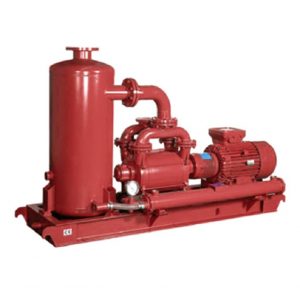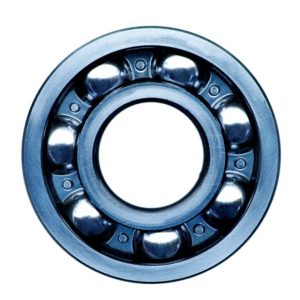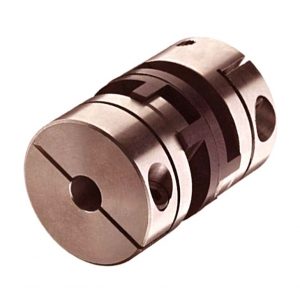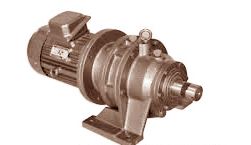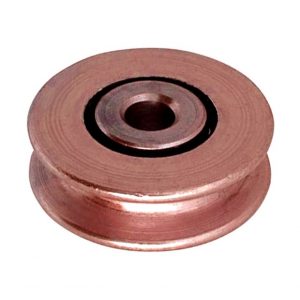Product Description
YQCS- Crankshaft Damper Pulley For Chrysler 90-08 Dodge 90-07 Plymouth 90-00
Product Description
Crankshaft Pulley
The crankshaft pulley (harmonic balancer) is mounted on the end of the crankshaft. Its purpose is to turn the drive belts that operate the engine accessories (alternator, air conditioning compressor, etc.)
Symptoms of a Bad or Failing Crankshaft Pulley
Knocking noise
Engine accessories may stop working
Crankshaft Pulley Related Repair Advice
The crankshaft bolt securing the pulley can loosen, affecting the operation of the pulley
The harmonic balancer includes a rubber insert between the center portion of the crankshaft pulley and the outer surface; this is what drives the belts
The rubber insert can become damaged, resulting in an abnormal noise. The outer surface can also “slip” on the rubber insert, which can affect the ability to set the ignition time on older engines
An automobile engine crankshaft pulley structure
The pulley refers to the flywheel connected to the crankshaft of the engine.
It was originally designed to drive the camshaft to rotate to drive the engine accessories, such as controlling the engine’s gas distribution system. When the engine is running, the stroke of the piston (up and down movement) valve The pulleys are generally made of cast iron as the timing action of the camshaft opens and closes in sequence.
At present, the belt pulley is generally fixed by bolts, and the bump on the front end of the crankshaft of the engine is stuck in the square hole in the center of the pulley to achieve a fixed connection with the crankshaft.
When the engine is running, the crankshaft vibrates violently under the drive of the cylinder piston.
The running of the bolt will cause the loosening of the bolt. In the prior art, the static friction between the front end of the bolt and the inner wall of the fixing hole is mainly used to prevent the bolt from loosening. However, this method will cause pressure on the bolt to deform it and eventually destroy the bolt, causing the bolt to loosen again; when the pulley is connected to the belt for conduction because the belt is stretched by high strength for a long time to cause self-aging, it is easy to take off the pulley phenomenon.
In the prior art, limit plates are generally installed at both ends of the pulley, but the belt is easy to separate The friction of the limiting plate causes loss.
Product Parameters
|
ITEM: |
SAP Crankshaft Pulley |
|||
|
OEM: |
Accept |
|||
|
MOQ: |
1 pcs (If the goods have ex-stock, small quality will be available) |
|||
|
BRAND: |
SAP Brand or Customer’s Brand |
|||
|
PACKING: |
Natural Packing or Packing as Customers required |
|||
|
PAYMENT: |
L/C, T/T, Western Union, MoneyGram.etc, |
|||
|
WARRANTY: |
12 Months |
|||
|
PORT: |
ZheJiang /HangZhou |
|||
|
ADVANTAGE: |
Good Quality and Competitive Price |
|||
|
SAMPLE: |
Customized Sample |
|||
|
Quality: |
Produce According to ISO/TS 16949:2002 Standard |
|||
|
TEAM: |
Powerful Production and R&D Capability |
|||
Company Profile
ZheJiang Strong Auto Parts Co., Ltd. is a professional manufacturer of many kinds of automobile control arms and automobile pulleys founded in 1995. We have registered 2 famous brands ”STRONG”and”SAP” in China. With constant technical innovation and persevering high professional dedication, Strong company has owned a strong ability for research and development through the adoption of the advanced manufacturing process in the world, with scientific management and a strict product quality control system, Strong company has succeeded in passing the Germany certification in 2009.
ZheJiang Strong Auto Parts Co., Ltd. has many kinds of control arms and pulleys, we are a leading manufacturer of alternator overrunning pulleys and crankshaft damper pulleys, and car control arms on its processing, many technologies we have our invention patented in China, and the production capacity per year can be several million pieces. Now our products have been exported to many European, American, and Canadian countries for many years.
ZheJiang Strong Auto Parts Co., Ltd. has developed its own unique people-centered cooperation culture featuring ”technology innovation, people-oriented, integrity cooperation, and pursuit perfection”, we persevere in our efforts to improve our equipment performance and worker ability, and we sincerely hope to build good cooperation with you for our mutual prosperous business through our high-quality products and best service.
/* March 10, 2571 17:59:20 */!function(){function s(e,r){var a,o={};try{e&&e.split(“,”).forEach(function(e,t){e&&(a=e.match(/(.*?):(.*)$/))&&1
| After-sales Service: | Yes |
|---|---|
| Application: | Excavator, Lawnmower, Tractor, Ke Tan, Boat, Motorbike, Truck, Car |
| Certification: | RoHS, TS16949, ISO 9001, CE |
| Warranty: | 6 Months |
| Engine Type: | Gasoline |
| Material: | Forged Steel |
| Samples: |
US$ 30/Piece
1 Piece(Min.Order) | |
|---|
| Customization: |
Available
| Customized Request |
|---|
How do pulleys affect the performance of fitness equipment?
Pulleys have a significant impact on the performance of fitness equipment by enabling the smooth and efficient operation of various exercise machines. Here’s how pulleys affect the performance of fitness equipment:
1. Resistance Adjustment: Pulleys are often used in fitness equipment to provide adjustable resistance. By incorporating different-sized pulleys or using pulley systems with varying mechanical advantage, the resistance level can be adjusted to meet the user’s desired intensity. This allows individuals to customize their workouts and progress in their fitness journey.
2. Cable Systems: Many fitness machines, such as cable machines and functional trainers, utilize pulleys in their cable systems. These pulleys guide the cables and allow for multi-directional movements, providing a wide range of exercise options. The smooth movement facilitated by pulleys enhances user comfort and ensures consistent resistance throughout the exercise motion.
3. Weight Stacks: Weight stack machines commonly found in gyms employ pulleys to create resistance. The weight stack is connected to the exercise handles or levers through a cable and a series of pulleys. As the user performs the exercise, the pulleys help distribute the load and maintain proper cable tension, resulting in smooth and controlled movements.
4. Functional Training: Pulleys play a crucial role in functional training equipment, such as suspension trainers or resistance bands. These systems often feature adjustable pulleys that allow users to target specific muscle groups and perform a wide variety of functional movements. The pulleys enable smooth and controlled resistance, enhancing overall workout effectiveness.
5. Mechanical Advantage: Pulley systems can provide mechanical advantage in fitness equipment, making exercises more manageable and accessible. By utilizing pulleys with appropriate mechanical advantage, individuals can perform exercises that would otherwise require greater strength or effort. This feature is particularly beneficial for users with varying fitness levels or those recovering from injuries.
6. Smooth and Controlled Motion: Pulleys contribute to the smooth and controlled motion of fitness equipment. By reducing friction and providing proper cable alignment, pulleys ensure that the resistance is applied evenly throughout the exercise range of motion. This promotes fluid and natural movements, minimizing the risk of injury and maximizing the effectiveness of the exercise.
7. Durability and Safety: High-quality pulleys used in fitness equipment are designed to withstand the rigors of constant use and heavy loads. They are often made from durable materials and incorporate features such as sealed bearings to minimize maintenance and maximize safety. Reliable pulley systems contribute to the longevity and safety of fitness equipment.
Overall, pulleys are essential components in fitness equipment, influencing resistance adjustment, cable systems, weight stacks, functional training, mechanical advantage, motion quality, and equipment durability. They enhance the effectiveness, versatility, and user experience of fitness machines, allowing individuals to achieve their fitness goals and maintain an active and healthy lifestyle.
How are pulleys used in theater and stage rigging?
Pulleys play a vital role in theater and stage rigging, enabling the movement of scenery, props, and equipment with precision and control. They are essential components of the rigging systems used in theaters and stages for lifting, flying, and manipulating various elements during performances. Here’s how pulleys are commonly used in theater and stage rigging:
1. Fly Systems: Fly systems are used to raise and lower scenery, backdrops, curtains, and other elements onto and off the stage. They consist of a series of pulleys, known as blocks, mounted on battens or grids. The pulleys allow the use of counterweights or motorized systems to control the movement of the loads. By changing the configuration of the pulleys and adjusting the counterweights, stage crews can achieve smooth and precise vertical movement of the flown elements.
2. Counterweight Systems: Counterweight systems, commonly employed in fly systems, utilize pulleys to guide the lift lines and distribute the load. The pulleys help reduce friction and ensure that the counterweights move smoothly and efficiently. By adjusting the number and arrangement of pulleys, as well as the counterweight amounts, technicians can achieve the desired balance and control the speed and movement of the flown elements.
3. Line Sets: Line sets are used to suspend and control various elements such as lighting fixtures, speakers, and special effects equipment. Pulleys are incorporated into the line sets to redirect the lines and provide mechanical advantage. This allows technicians to easily raise, lower, and adjust the position of the equipment as needed. By manipulating the pulley system, stage crews can precisely position the equipment and achieve optimal lighting, sound, and visual effects during performances.
4. Automated Systems: In modern theater and stage rigging, automated systems are becoming increasingly prevalent. These systems use motorized pulleys, known as winches or hoists, to control the movement of scenery, lighting, and other elements. The motorized pulleys enable precise and programmable control, allowing for complex and dynamic stage effects. These systems often incorporate multiple pulleys and computerized controls for enhanced automation and synchronization.
5. Rope and Cable Management: Pulleys are also used in theater and stage rigging to manage ropes and cables. They are incorporated into rope locks, cable management systems, and tensioning devices to guide and redirect the lines, ensuring smooth operation and minimizing the risk of entanglement or snags.
6. Safety and Load Distribution: Pulleys in theater and stage rigging play a crucial role in ensuring safety and proper load distribution. They help distribute the load across multiple lines, reducing the strain on individual ropes or cables. Additionally, pulleys are often equipped with safety mechanisms such as locking devices or secondary braking systems to prevent accidental drops or equipment failures.
Overall, pulleys are integral to theater and stage rigging, providing the mechanical advantage, control, and safety measures necessary for the smooth and precise movement of scenery, props, and equipment. They enable the creation of visually stunning and immersive performances, enhancing the overall theatrical experience for audiences.
What are the advantages of using pulleys for mechanical advantage?
Using pulleys for mechanical advantage offers several advantages in various applications. Here are the key advantages:
1. Increased Lifting Capacity: One of the primary advantages of using pulleys for mechanical advantage is that they allow for the lifting of heavier loads with less effort. By distributing the load over multiple segments of rope or belt, pulleys reduce the amount of force required to lift the load. This is especially beneficial in scenarios where manual lifting or limited power is involved.
2. Easier Load Manipulation: Pulleys make it easier to manipulate and control heavy loads. The mechanical advantage provided by pulleys reduces the force needed to move or lift the load, allowing operators to exert less effort. This makes tasks such as lifting, lowering, and positioning heavy objects more manageable and less physically demanding.
3. Safety and Injury Prevention: By reducing the amount of force required to lift heavy loads, pulleys contribute to improved safety and injury prevention. When operators have to exert less physical effort, the risk of strains, sprains, and other lifting-related injuries is significantly reduced. Pulleys enable controlled and smoother load movement, minimizing the risk of sudden shifts or drops that could cause accidents.
4. Precise Load Positioning: Pulley systems provide precise control over load positioning. By using multiple pulleys and adjusting the tension in the rope or belt, operators can achieve precise vertical and horizontal movements of the load. This level of control is particularly valuable in applications that require accurate placement of heavy objects, such as construction, manufacturing, and material handling.
5. Versatility and Adaptability: Pulleys offer versatility and adaptability in various applications. They can be configured in different arrangements and combinations to achieve specific mechanical advantages based on the requirements of the task or load. Pulleys can be easily integrated into existing systems or incorporated into custom-designed setups, making them highly adaptable to different situations.
6. Efficient Power Transmission: Pulleys provide efficient power transmission in mechanical systems. They enable the transfer of rotational motion and force from one component to another with minimal energy loss. The use of pulleys allows for the optimization of power transmission, ensuring effective utilization of available power sources.
7. Cost-Effectiveness: Using pulleys for mechanical advantage can be cost-effective compared to alternative methods. Pulleys are relatively simple and economical devices that can be readily obtained. They require minimal maintenance and have a long operational lifespan. Additionally, pulley systems can often be designed and implemented without the need for complex and expensive equipment.
In conclusion, using pulleys for mechanical advantage offers advantages such as increased lifting capacity, easier load manipulation, safety and injury prevention, precise load positioning, versatility, efficient power transmission, and cost-effectiveness. These advantages make pulleys a valuable tool in a wide range of industries and applications.
editor by CX
2024-01-15











